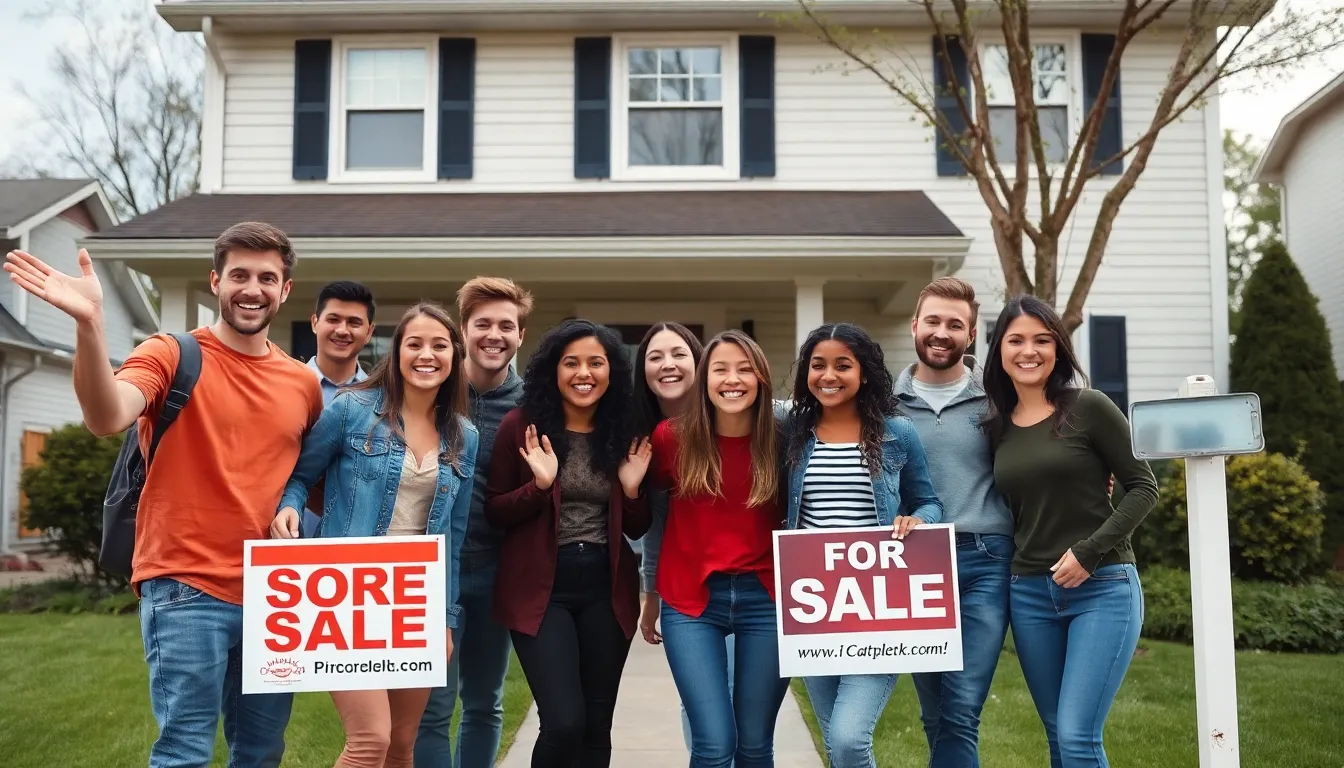Table of Contents
ToggleDreaming of homeownership but feeling weighed down by the hefty down payment? You’re not alone. Many potential buyers think they need to save up a mountain of cash before they can unlock the door to their own castle. But what if there’s a way to step into your dream home without emptying your wallet?
Understanding Low Down Payment Options
Low down payment options enable many potential homebuyers to attain homeownership while minimizing initial costs. Various loan programs exist to support individuals looking to purchase a home with reduced financial burden.
Types of Low Down Payment Loans
FHA loans require a down payment of just 3.5%. This program is popular among first-time buyers. VA loans don’t necessitate a down payment for eligible veterans and active-duty service members. USDA loans provide options for qualifying rural areas, with a zero down payment requirement. Conventional loans may also allow for low down payments, often starting at 3%. Each type of loan caters to specific needs, making homebuying more accessible.
Eligibility Requirements
Income and credit score requirements vary by loan type. FHA loans typically require a minimum credit score of 580 for the low down payment option. VA loans are available for qualified veterans, with no income limits or down payment criteria. USDA loans require buyers to meet income limitations, which typically cap at 115% of the median income in the area. Conventional loans usually demand a credit score of at least 620. Understanding these criteria helps potential buyers pursue the best financing options available.
Benefits of Buying a House with Low Down Payment

Purchasing a home with a low down payment offers numerous advantages that make homeownership achievable for many.
Increased Accessibility for First-Time Buyers
Low down payment options significantly benefit first-time buyers. Many individuals facing high rental costs find homeownership more attainable without saving extensive amounts. Programs like FHA loans only require a 3.5% down payment, which opens doors for those with limited savings. VA loans and USDA loans provide alternative paths, offering no down payment for eligible veterans and occupants in designated rural areas, respectively. These options reduce the financial barriers associated with buying a home, making it feasible for individuals to enter the housing market sooner.
Financial Flexibility
Buying a house with a low down payment promotes financial flexibility. Reduced upfront costs allow buyers to allocate funds to other essential expenses, such as moving costs, renovations, or emergency savings. Lowering the initial investment means individuals retain more savings for unexpected repairs or investments. Conventional loans with down payments starting at just 3% also empower buyers to maintain their financial resources. Loans with minimal down payments minimize pressure on budgets, enabling responsible financial planning and long-term stability.
Steps to Consider When Buying a House with Low Down Payment
Understanding the steps involved in buying a house with a low down payment is essential for potential homebuyers. These steps will guide individuals toward making informed decisions.
Pre-Approval Process
Securing a mortgage pre-approval enables potential buyers to understand their borrowing capacity. Lenders assess credit scores, income levels, and debt-to-income ratios before providing a pre-approval letter. Receiving this letter strengthens a buyer’s position and indicates serious intent to sellers. Gathering necessary documentation, including tax returns and bank statements, accelerates this process. Knowing the pre-approved amount also helps narrow down suitable properties.
Choosing the Right Loan Program
Selecting the appropriate loan program is crucial for affordability. Several options, including FHA, VA, and USDA loans, cater to various buyer situations. FHA loans require a 3.5% down payment, while VA loans often offer zero down payment for eligible veterans. USDA loans likewise grant access to qualifying rural areas with no down payment. Each program has unique eligibility criteria, emphasizing the importance of research. Understanding specific requirements helps buyers identify which program best suits their financial situation and homeownership goals.
Common Challenges and How to Overcome Them
Potential homebuyers face several challenges when opting for a low down payment. Understanding these hurdles enables strategic planning and informed decisions.
Higher Monthly Payments
Higher monthly payments often accompany low down payments. Buyers may find that financing a larger loan amount increases their monthly mortgage payments. Budgeting becomes crucial, as affordability hinges on income, expenses, and loan terms. It helps to calculate potential payments using online mortgage calculators before proceeding with a purchase. Additionally, connecting with a financial advisor can provide insights into managing long-term financial commitments. Exploring various loan terms might reduce monthly obligations. Seeking lower interest rates also alleviates their financial burden over time.
Potential for Private Mortgage Insurance (PMI)
Potential homebuyers may encounter the requirement for Private Mortgage Insurance (PMI) with low down payment loans. PMI protects lenders in case of default and adds an extra cost to monthly payments. Awareness of PMI requirements allows buyers to factor this into their financial planning. Monthly PMI costs typically range from 0.3% to 1.5% of the original loan amount, depending on several factors. Options exist to avoid PMI, such as making a larger down payment or opting for a lender-paid mortgage insurance plan. When buyers confront PMI costs, they should evaluate its implications on their overall budget and consider refinancing options in the future.
Buying a house with a low down payment opens doors for many aspiring homeowners. It allows individuals to step into the housing market without the burden of a hefty initial investment. With options like FHA, VA, and USDA loans, potential buyers can find a solution that fits their unique needs and financial situation.
While challenges like higher monthly payments and PMI may arise, careful planning and budgeting can mitigate these concerns. By understanding the various loan programs and their requirements, buyers can make informed choices that lead to successful homeownership. Ultimately, taking the leap with a low down payment can lead to financial flexibility and stability, paving the way for a brighter future in a new home.








